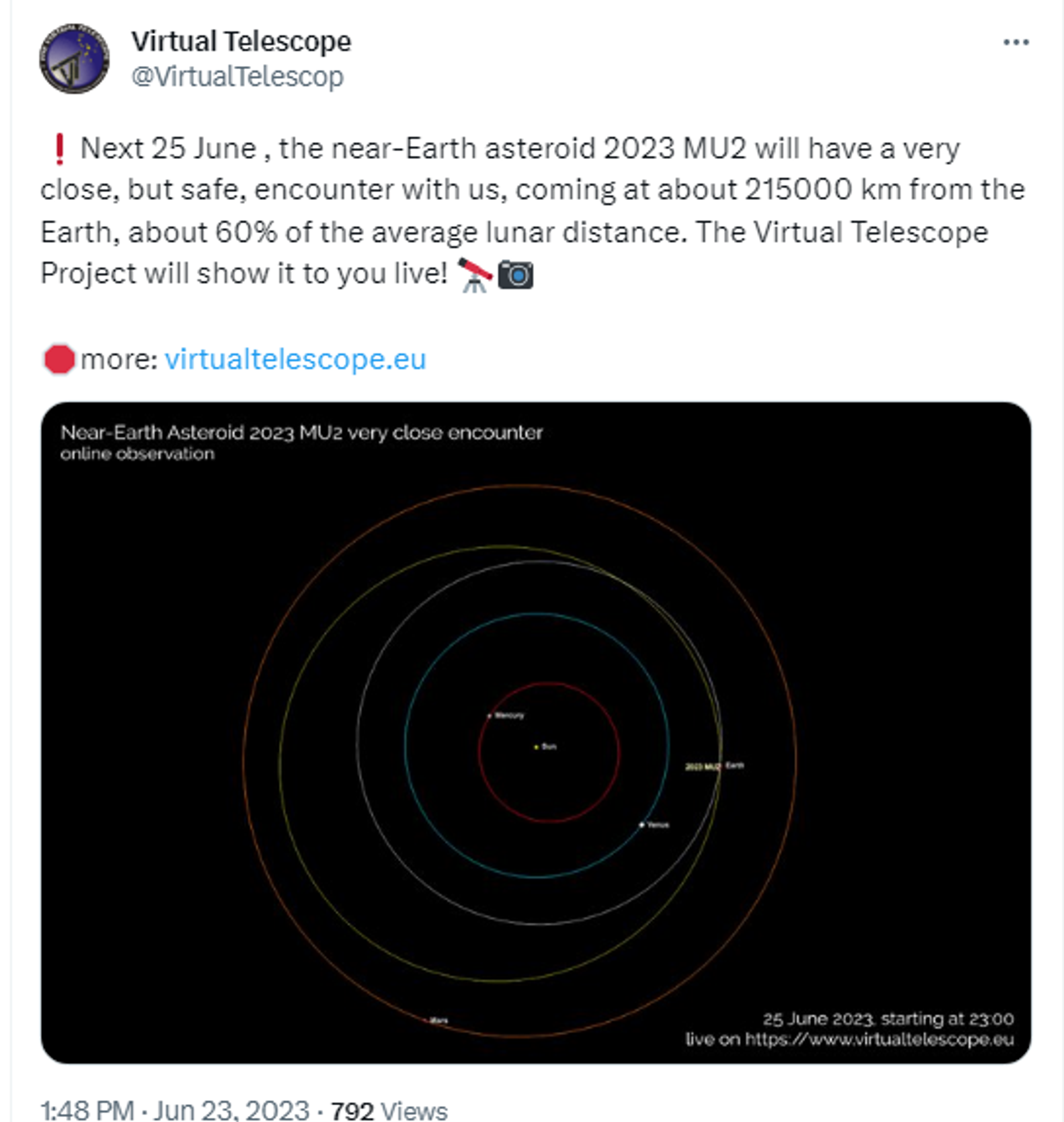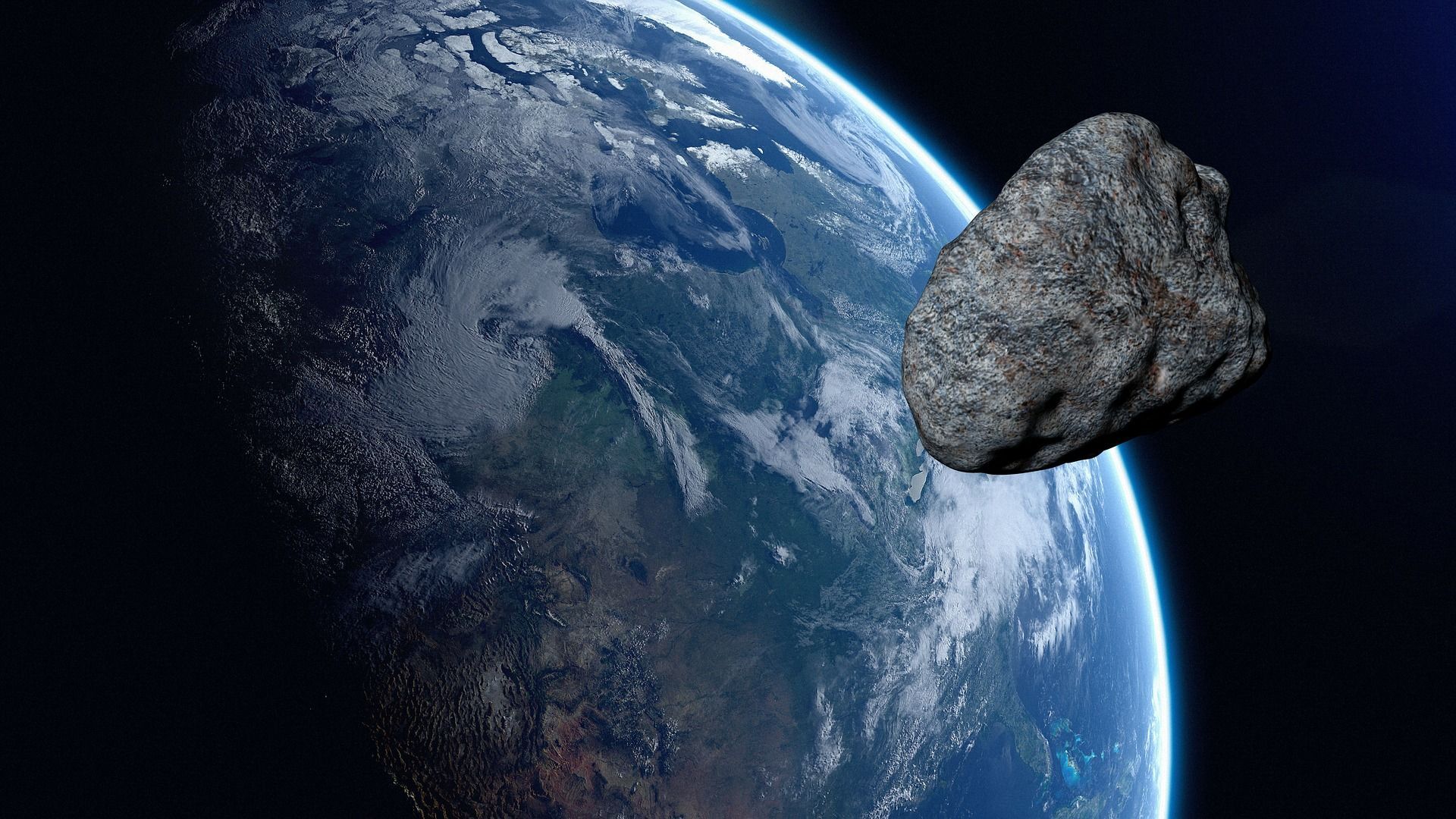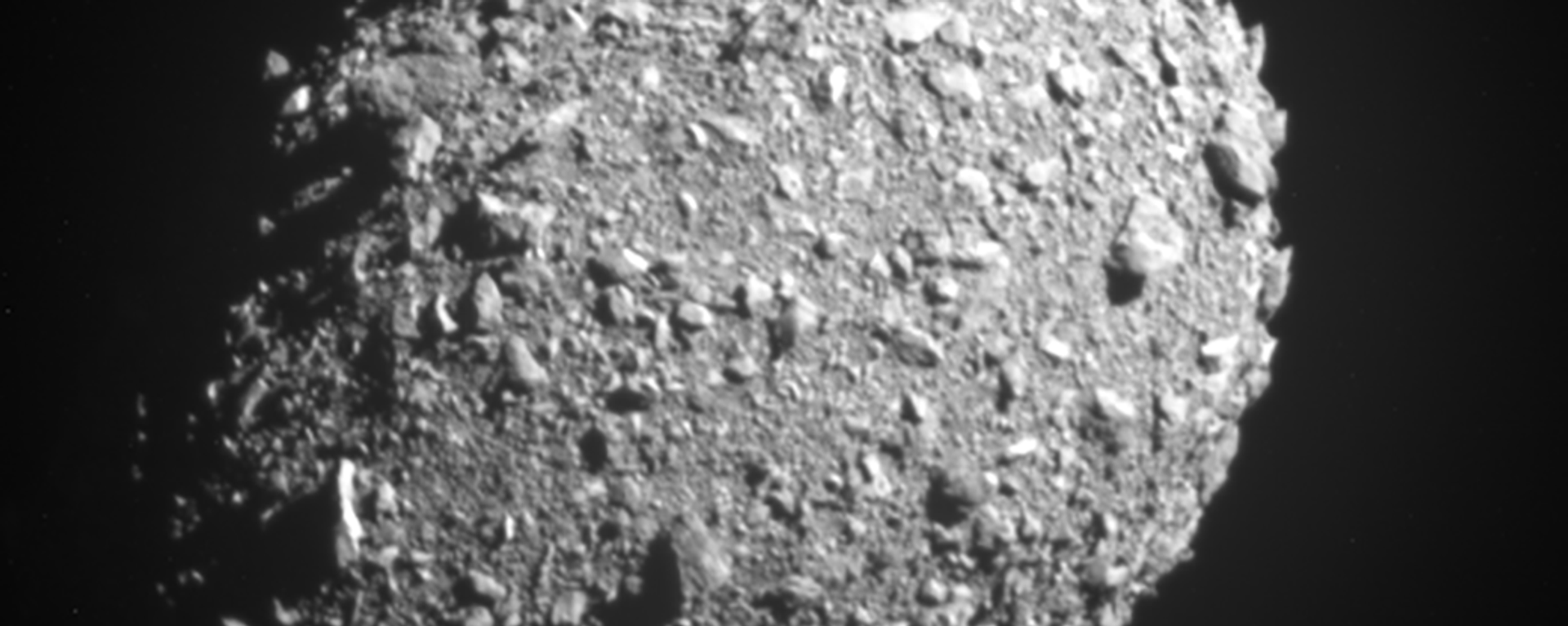https://sputnikglobe.com/20230624/asteroid-as-bulky-as-three-story-building-to-zoom-past-earth--1111441979.html
Asteroid as Bulky as Three-Story Building to Zoom Past Earth
Asteroid as Bulky as Three-Story Building to Zoom Past Earth
Sputnik International
A huge asteroid is hurtling towards planet Earth, and is expected to make its closest approach on Sunday at 7:19 p.m. ET.
2023-06-24T12:09+0000
2023-06-24T12:09+0000
2023-06-24T12:09+0000
beyond politics
space
asteroid
asteroid collision
nasa
earth
science & tech
centre for near-earth object studies (cneos)
https://cdn1.img.sputnikglobe.com/img/107910/12/1079101273_0:0:1920:1080_1920x0_80_0_0_b35ef316c4a2d8961c9599291130f047.jpg
A huge asteroid is hurtling towards planet Earth, and is expected to make its closest approach on Sunday at 7:19 p.m. ET.Dubbed 2023 MU2, it was only discovered a week ago, as per the International Astronomical Union's Minor Planet Center. The near-Earth asteroid is estimated to be somewhere between 13 and 29 feet in diameter (3.9-8.8 meters), or, in other words, close to the size of a three-story building.It will skim past within 134,000 miles (215,000 kilometers) of Earth. Incidentally, the distance is about 60 percent of the average distance from our planet to the moon. For those wanting to get an eyeful, you can observe the pass by via a livestream provided by the Virtual Telescope Project.Admittedly, in astronomical terms, this flyby is quite close. However, according to experts, there is no cause for alarm. The asteroid is one of several also following a near-Earth route these few days. Like asteroid 2023 MW2 that zoomed by on Friday. It was as big as a car and passed at a distance of just 77,000 miles (124,000 km).To date, NASA’s Center for Near-Earth Object Studies (CNEOS) has cataloged over 32,000 near-Earth asteroids. The center, which is tasked with computing high-precision orbits for the NEOs, weighing in on close approaches to Earth, and producing assessments, states that none are known to pose a threat to Earth in the next century, according to NASA.Incidentally, Dimorphos asteroid, roughly the size of a stadium, and also passing Earth this weekend, albeit at a greater distance, is noted for having had its orbit successfully altered.Asteroid deflection technology was used by NASA’s Double Asteroid Redirection Test (DART) system to deliberately crash an object into it last year. Even though the celestial rock did not pose a threat to our planet, it was hailed as a watershed moment for planetary defense.
https://sputnikglobe.com/20230301/scientists-nasas-asteroid-diverting-dart-test-validated-using-kinetic-impact-for-earth-defense-1107918129.html
earth
Sputnik International
feedback@sputniknews.com
+74956456601
MIA „Rossiya Segodnya“
2023
News
en_EN
Sputnik International
feedback@sputniknews.com
+74956456601
MIA „Rossiya Segodnya“
Sputnik International
feedback@sputniknews.com
+74956456601
MIA „Rossiya Segodnya“
asteroid, zoom past earth, near-earth orbit, nasa, nasa’s center for near-earth object studies, cneos, dart, double asteroid redirection test,
asteroid, zoom past earth, near-earth orbit, nasa, nasa’s center for near-earth object studies, cneos, dart, double asteroid redirection test,
Asteroid as Bulky as Three-Story Building to Zoom Past Earth
Earth’s ‘close encounters’ with a space rock are hardly rare. According to NASA’s Jet Propulsion Laboratory, this weekend alone, several asteroids are passing out planet. One, estimated to be the size of a car, skimmed by at 77,000 miles (123,919km) on Friday.
A huge
asteroid is hurtling towards planet Earth, and is expected to make its closest approach on Sunday at 7:19 p.m. ET.
Dubbed 2023 MU2, it was only discovered a week ago, as per the International Astronomical Union's Minor Planet Center. The near-Earth asteroid is estimated to be somewhere between 13 and 29 feet in diameter (3.9-8.8 meters), or, in other words, close to the size of a three-story building.
It will skim past within 134,000 miles (215,000 kilometers) of Earth. Incidentally, the distance is about 60 percent of the average distance from our planet to the moon. For those wanting to get an eyeful, you can observe the pass by via a livestream provided by the
Virtual Telescope Project.
Admittedly, in astronomical terms, this flyby is quite close. However, according to experts, there is no cause for alarm. The asteroid is one of several also following a near-Earth route these few days. Like asteroid 2023 MW2 that zoomed by on Friday. It was as big as a car and passed at a distance of just 77,000 miles (124,000 km).
To date, NASA’s Center for Near-Earth Object Studies (CNEOS) has cataloged over 32,000 near-Earth
asteroids. The center, which is tasked with computing high-precision orbits for the NEOs, weighing in on close approaches to Earth, and producing assessments, states that none are known to pose a threat to Earth in the next century, according to NASA.
Incidentally, Dimorphos asteroid, roughly the size of a stadium, and also passing Earth this weekend, albeit at a greater distance, is noted for having had its orbit successfully altered.
Asteroid deflection technology was used by NASA’s Double Asteroid Redirection Test (DART) system to deliberately crash an object into it last year. Even though the celestial rock did not pose a threat to our planet, it was hailed as a watershed moment for planetary defense.




